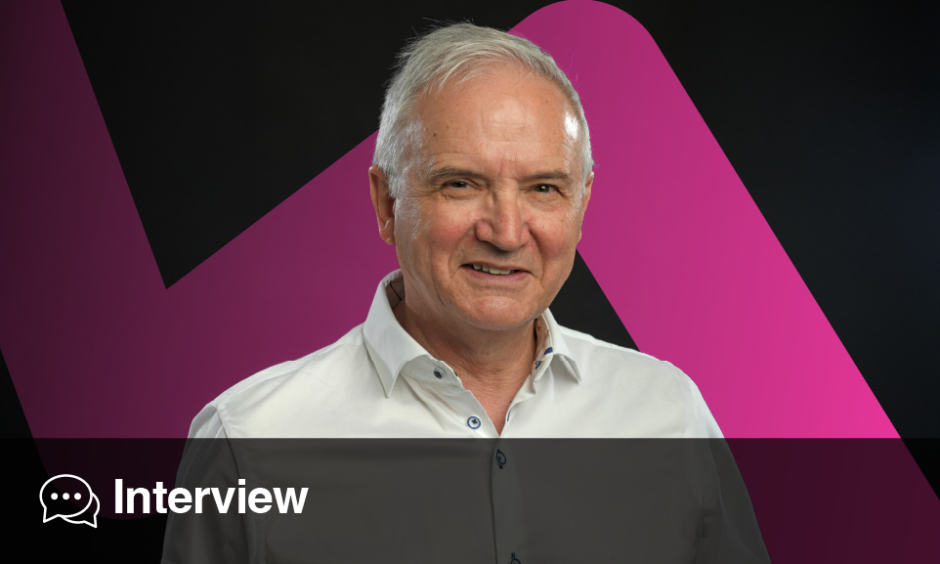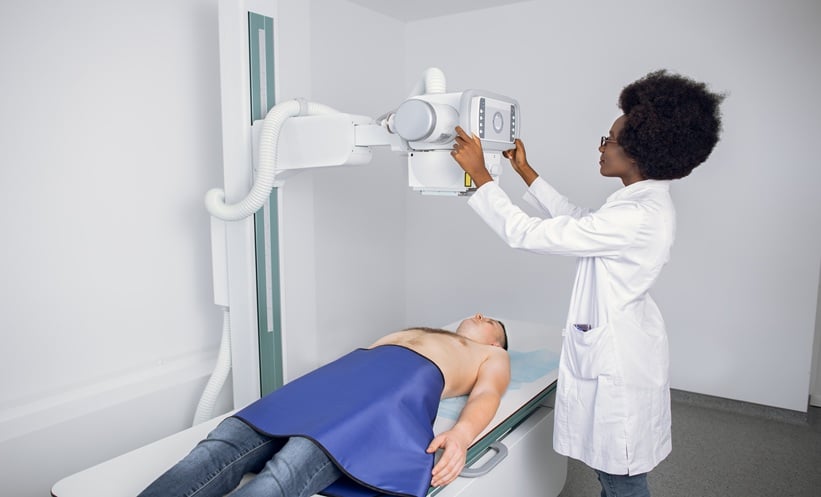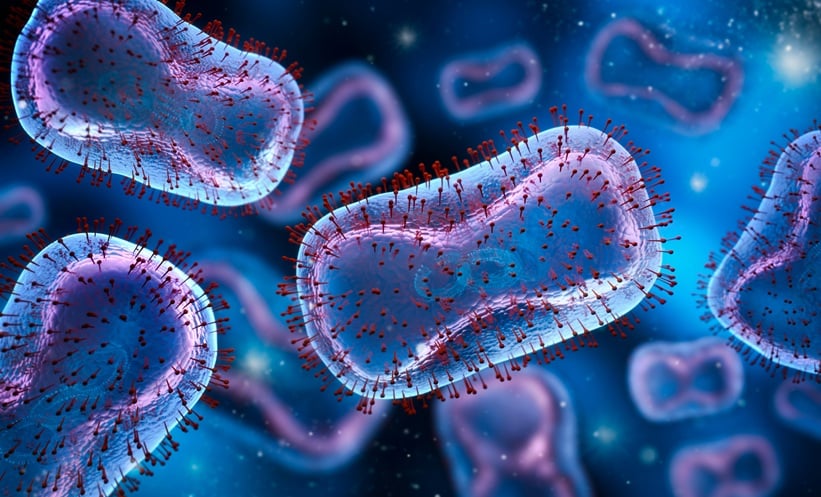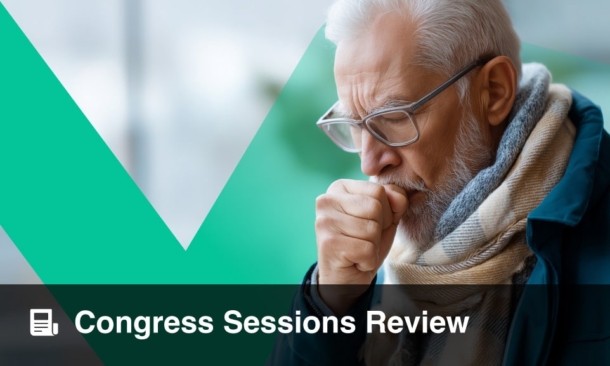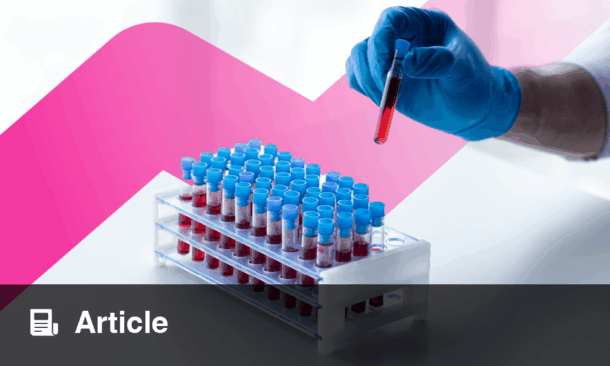Peter Openshaw | Proconsul, Professor of Experimental Medicine, National Heart & Lung Institute – Faculty of Medicine, Imperial College London, UK
Citation: EMJ Microbiol Infect Dis. 2025;6[1]:48-51. https://doi.org/10.33590/emjmicrobiolinfectdis/PVMM7205.
![]()
You’ve worked extensively on respiratory syncytial virus (RSV) and influenza. What are the key differences in how the immune system responds to these two viruses at the mucosal level?
In the opening lines of Anna Karenina, Leo Tolstoy wrote: “All happy families are alike; each unhappy family is unhappy in its own way.” Similarly, each respiratory virus has developed its own way of getting round mucosal defences. Influenza tends to be a ‘quick in, quick out’, taking a smash-and-grab approach to replicating in the mucosa. RSV has greater immunological subtlety; perhaps I’m biased, but I admire the way that RSV takes its time and gains control of the defences. RSV has provided me with decades of interest trying to work out how it causes disease, and how it infects again and again without the need to mutate. The non-structural proteins (called NS1 and NS2) seem vital in immune evasion, but the details are still being worked out.
Your early work revealed that T cells can be pathogenic in RSV infection, a major shift in how we think about antiviral immunity. Has this concept influenced vaccine design strategies for respiratory viruses?
I’m not sure how much that discovery influenced vaccinologists. They are pragmatic people; traditionally, they identify an antigen, make sure it’s not too toxic and then find out whether it induces protection. Although they might be aware of what is going on in the world of immunology they are not necessarily governed by it. Despite knowing that T cells could be important one way or another they tend to focus on inducing a good antibody response. Antibodies are easier to measure. T cells might be good or bad, but it’s not easy to interpret what is found in the blood.
What’s transformed the RSV vaccine field was the realisation that the fusion protein flips into a post-fusion conformation which hides the neutralising epitope. By stabilising the antigen and pre-F form it’s been possible to make a new generation of vaccine candidates that has opened the floodgates for vaccines that work. It’s a very exciting time in the RSV field, with three approved vaccines that provide excellent protection in older adults, and long half-life antibody that is superb at preventing babies from getting severe disease.
You’ve emphasised the importance of the ‘innate preparedness’ of the respiratory mucosa. Could you elaborate on how this concept changes our approach to both prevention and early detection of viral respiratory infections?
Having tried to study both innate and acquired responses in animals and human volunteers, it’s clear that the mucosa is constantly changing, and the state of defences is variable. If there’s somebody in the household with a cold, we may or may not catch it. If we put a cold virus into the nose of a volunteer, they may or they may not be infected. Often in household studies, about 20% of people become infected. So why do 80% resist, despite it being present in the household?
Over the last 20 years, we’ve learnt so much about innate defences, and how there’s a complex matrix of competence and incompetence within each of us. We might have 40 different ways of developing an innate defence and 40 ways of failing to make that innate defence. This rich variety of innate defence is imprinted by the past and senses the present. The innate defences are crucial in determining which of us gets infected by a known or unknown pathogen, so no single pathogen will infect every member of a community. That rich landscape of innate defence is almost certainly at the bottom of why some people do, and others don’t, catch a cold.
With your experience transitioning from murine to human immunology, what are some key limitations of animal models in respiratory virus research, and how do human mucosal studies offer a more translational perspective?
I found working with mice enormously rewarding. You could find out what the immune system was doing by taking a rational stepwise approach, altering one element at a time and seeing what the consequence was. Animal studies have provided a way to ‘pick apart the machine’ and understand what different components of the immune system do. It’s brought a great richness to immunology and informed the way that we design and run our human studies over the past two decades.
One transformative technique has been the sampling of mucosal fluid using absorptive matrix technologies developed by my great friend and colleague Trevor Hansel, working closely with Ryan Thwaites, at Imperial College London, UK. Although sampling the upper airway doesn’t give you a completely reliable picture of what’s happening in the deep mucosa, lung, or in the regional lymph nodes, it is so easy and convenient to get sequential samples of mucosal fluid. Sampling lymph nodes with ultrasound and needle sounds invasive, but allows you to understand much more about what’s going on by looking at the mucosa, the regional lymph nodes, and in the periphery. You do see what’s going on in the immune system by studying the peripheral blood but it is a very Vaseline lens compared to looking at the site of the infection: the blood is ‘through a glass, darkly’.
In your work establishing human challenge models for RSV, H1N1, and SARS-CoV-2, what have been the most valuable insights gained from controlled infection studies that would be difficult to observe in natural infections?
When observing natural infection, you are only seeing what’s happening after the disease has established itself, the peak, and then recovery. What you’re not seeing is the negotiation that has gone on between the virus and the mucosa in those very early stages, which is critical to the outcome.
The unique advantage of human challenge models is that you can look at what’s present before disease starts; in other words, the mucosal landscape of innate responses and the microbiome of the mucosa. You can take a very careful account of past exposures, looking at which viruses the person has already some immunity to. Then, when exposing individuals to the virus, you can study who becomes infected, who doesn’t become infected, or who becomes transiently infected with a ‘glancing’ infection, which resolves without any symptoms.
You can also take samples every day, or several times a day, using minimally invasive methods to get a complete time-based profile of what happens in the early stage of infection, when the virus is gaining a foothold or is growing and invading new cells, and finally what happens as the infection resolves. You get that real-time picture of progression in a time-based sequence. Being able to watch the whole spectrum of infection, from the earliest encounter of the virus with a cell in the mucosa, through to the ultimate resolution, has really been the most fundamental insight for me.
Through the Mechanisms of Severe Acute Influenza Consortium (MOSAIC) and International Severe Acute Respiratory Infection Consortium-Coronavirus Clinical Characterisation Consortium (ISARIC4C), you’ve gathered rich clinical and immunological data during pandemic settings. What key learnings, and what are the immunological signatures or host response patterns have emerged from these cohorts that help distinguish severe from mild disease in influenza or COVID-19?
It’s not only the immunological insights that have been important, but also the open collaboration. These consortia that you list work across different research groups, each bringing their own unique strengths. This approach is not easy under every funding model across different countries. For example, in the UK, it’s been possible to put together these very open consortia where we all contribute our data and match it to all the clinical data, forming a platform for different analyses by different science-based groups. It’s that consortium approach which has been truly transformative in terms of immunological signatures.
Again, the time-based approach, which involves looking at what happens during the early viral phase and subsequent phases, is very much based on the inflammatory response to the virus. That’s been the case both with MOSAIC, where we were studying influenza, and ISARIC4C, for SARS-CoV-2. We have these two different phases: the early viral stage is usually associated with the immunological responses you would expect from interferons, and the later phase is a highly inflammatory response which doesn’t happen, fortunately, in everyone. When it does, it causes very severe disease.
We observed those different phases both in influenza and SARS-CoV-2, which emphasises the importance of treatments controlling that later inflammatory response associated with respiratory failure, intensive care, and artificial ventilation. Those are the unique insights gained from those studies.
Are there certain risk factors that influence a person having a stronger inflammatory reaction compared to another?
Absolutely, but the response that leads to severe disease and need for intensive care sits on a diverse platform of genetic variability. In a study led by intensivist Kenneth Baillie, University of Edinburgh, UK (a key member of both the MOSAIC and the ISARIC4C Consortia), we identified 49 distinct immunological genetic variants that, together contributed to the likelihood of hospitalisation and intensive care.1 We mapped those traits onto the scheme that we had for the time-based phases of disease, with variable abilities to control the virus and mount an inflammatory response.
Given your leadership roles in New and Emerging Respiratory Virus Threats Advisory Group (NERVTAG) and Scientific Advisory Group for Emergencies (SAGE), how should scientific advisory bodies balance urgent public health decision-making with the evolving nature of immunological data during emerging respiratory threats?
The relationship between the scientific advice that you provide and decisions reached by the politicians is an one. You have to accept that ‘advisers advise and politicians decide’. They have to balance not only the science that you tell them, but also the input they receive from other sources: schools, industry, civil service, etc.
As a scientific advisor, you must roll with the punches in terms of whether your advice is taken or not, and understand that scientific advice is but one aspect of what politicians have to consider. You mustn’t get upset if they decide on something which you think is not the best in terms of public health; that is their prerogative. Try to explain it better next time and put it down to experience. If you get upset by that, you shouldn’t really be a scientific advisor.
Looking ahead, what emerging areas or technologies do you believe will most significantly transform our understanding of respiratory immunity, and what challenges remain?
What I’m currently finding exciting are the new insights that we’re gaining from matching single cell RNA to anatomical structures and niches. It’s extraordinary to be able to see that there are cellular ‘nurseries’ being created within the mucosa, little nests of cells that nurture plasma cells making IgA, for example.
We’re still learning things that are critical to our understanding of how the mucosa defends itself. What are the other players involved in the immune responses? Although people have been working on carbohydrates for a long time, I don’t think that’s really come through into the mainstream understanding of respiratory immunity.
When I started out in immunology in the 1980s, we were excited about T cells, given that the T cell receptor had just been resolved. Everything was all about T cells, and antibody was regarded as being a bit of old hat, because people had been measuring that for such a long time, mostly in peripheral blood.
Then, the importance of innate immunity came as a surprise. If I look back at the lectures I gave undergraduates back in the 1990s, we knew almost nothing about the innate immune system. It’s been wonderful to see that immunology keeps marching on. There’s always another level of understanding and insight to be gained, particularly through extraordinarily powerful techniques that are now being applied. I can’t see over the next hill, but I’m sure there’s new mountains of knowledge ahead that we will be climbing. It’s such an exciting and interesting field to work in.
In terms of future challenges, we’ve been studying influenza and RSV for a long time, and we gathered an amazing amount of information during the COVID-19 pandemic, where there was rapid funding allowing a wealth of information to be gathered in a very short time about a relatively uniform tsunami of infection in a naïve population.
We know a lot about those viruses, but what about the rhinoviruses which cause so much trouble in our patients? As a physician who has spent 40 years working in the NHS with patients with respiratory disease, it’s rhinoviruses that are causing most exacerbations of asthma and deterioration of chronic bronchitis. We haven’t made much progress in creating vaccines to prevent rhinovirus infection. I would love to see more progress with tackling rhinovirus as a cause of poor health. Finally, I think human metapneumovirus is quite prominent now, and will probably be the next frontier in respiratory vaccinology.

